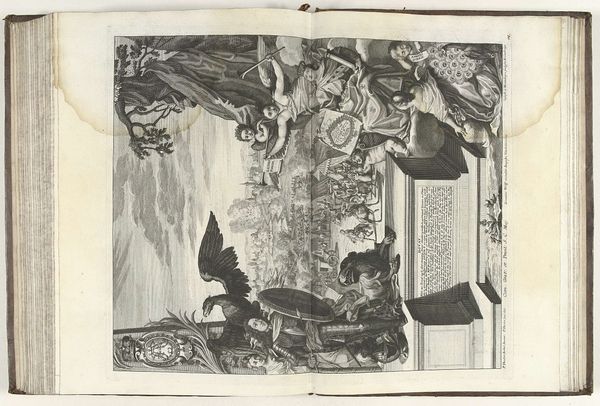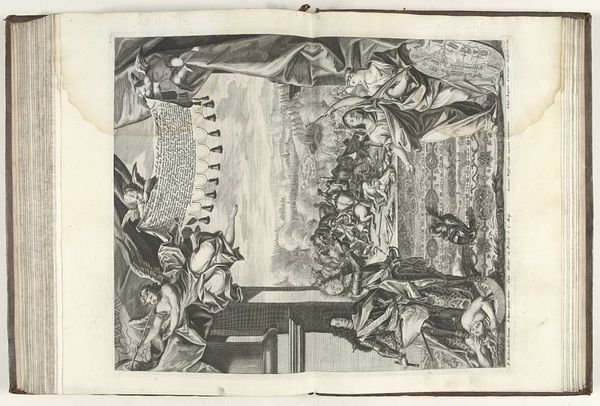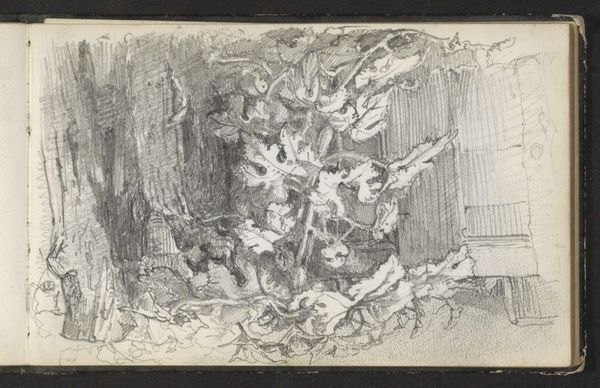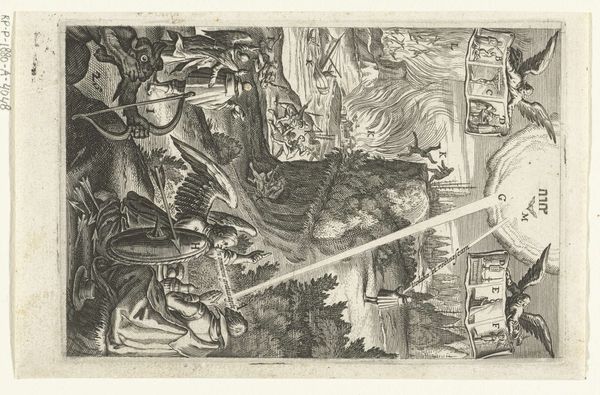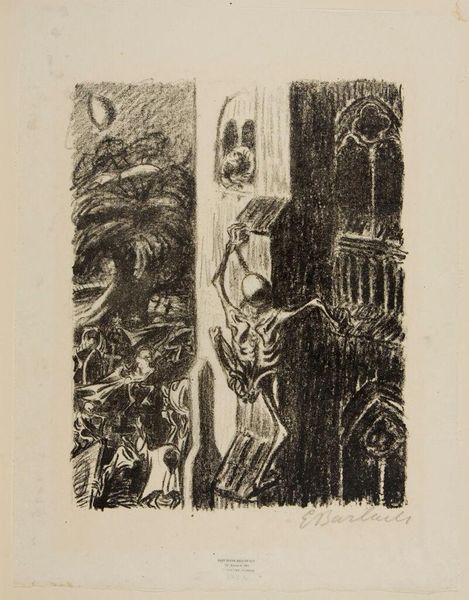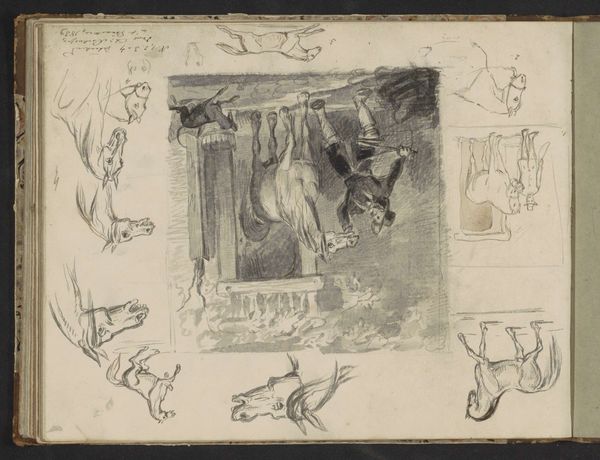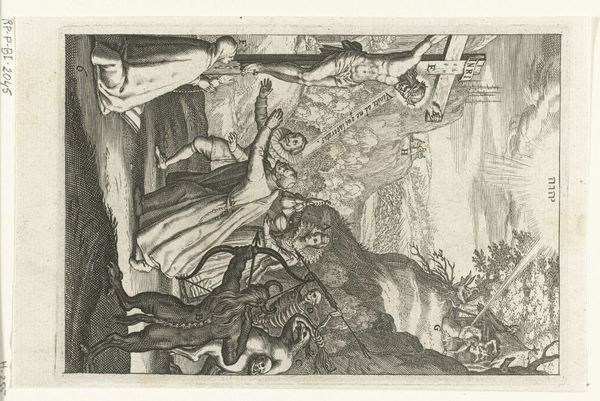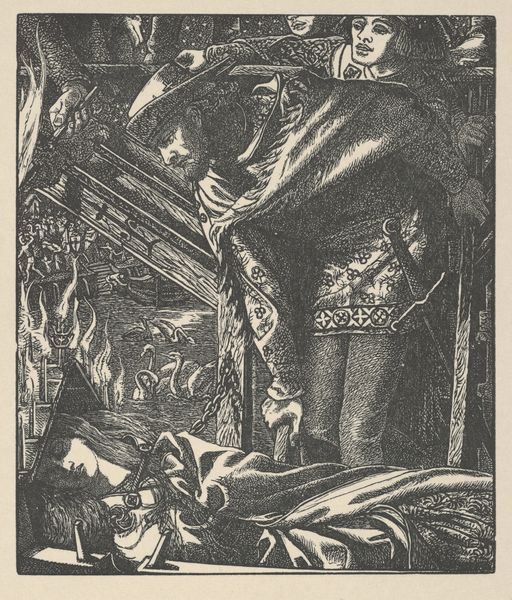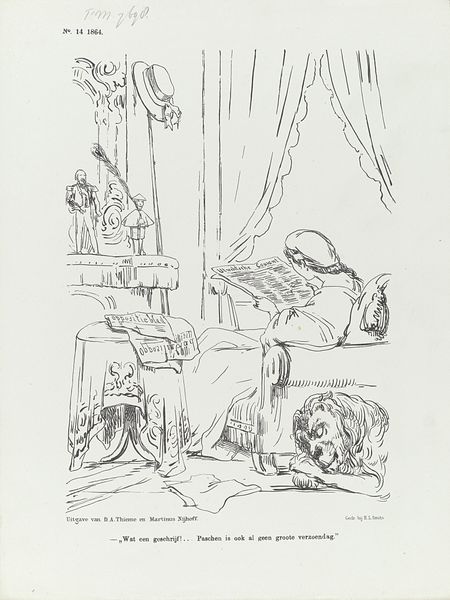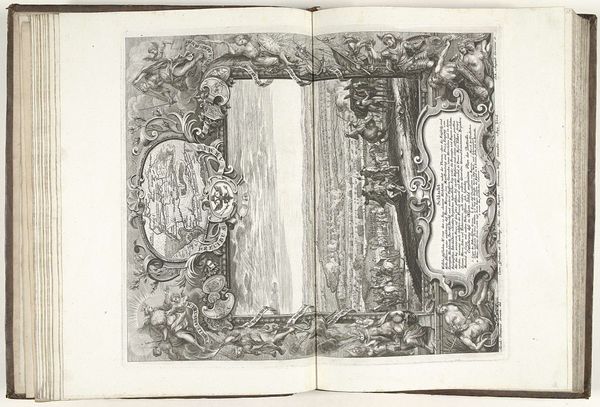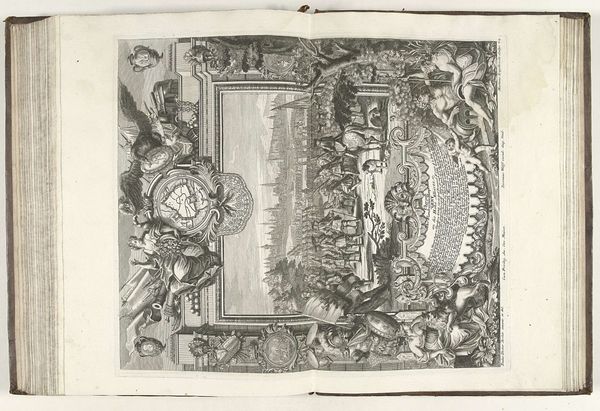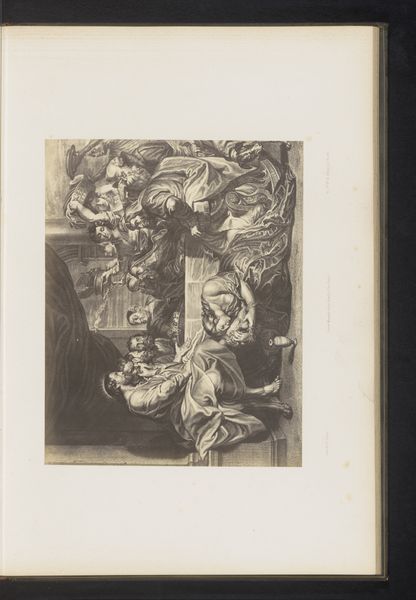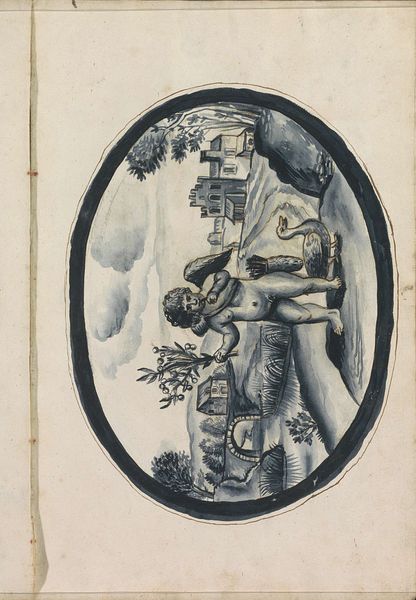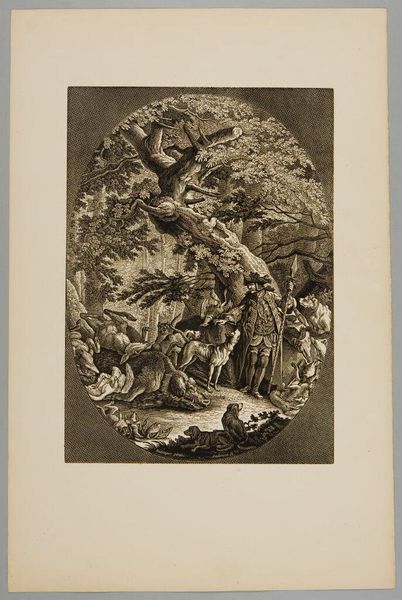
print, engraving
#
allegory
#
baroque
#
pen drawing
# print
#
perspective
#
figuration
#
line
#
history-painting
#
engraving
Dimensions: height 460 mm, width 390 mm
Copyright: Rijks Museum: Open Domain
Editor: We’re looking at "Ontvoering van Villeroy uit Cremona, 1702," an engraving by Martin Engelbrecht from around 1712 to 1715. It’s incredibly detailed. I’m struck by how the artist uses perspective, it's almost theatrical. How would you interpret this work within its historical context? Curator: Well, this print reflects the Baroque period’s fascination with dramatic narratives and the projection of power. The subject, Villeroy's capture during the War of the Spanish Succession, would have resonated deeply with audiences familiar with these political power plays. Consider how prints like this functioned as propaganda. How do you think its perspective and composition reinforce a particular viewpoint on this event? Editor: I see what you mean. The figures in the foreground seem almost staged, which makes it feel like the artist is crafting a specific narrative rather than simply documenting the event. The dramatic angels feel similarly strategic. Curator: Precisely! Engelbrecht isn't just illustrating history; he’s shaping public opinion. It's also interesting to note how allegory and figuration are being used. Are we supposed to interpret these images literally or metaphorically? Editor: I suppose both, intertwining fact with symbolism, blurring the lines, right? It’s making me think about how readily the public at the time might have accepted this version of events. Curator: And the extent to which it shaped their understanding. These prints helped construct collective memory. That blending is intentional. Consider the patronage and production processes. Did Engelbrecht have specific motivations, or operate under certain influences? Editor: That’s something to dig into further, to see how personal bias influenced these kinds of representations. Curator: Exactly! The more we examine, the better we’ll be able to dissect these period pieces for the messages and contexts hidden inside them. Editor: This definitely gave me a different lens for seeing the art. Thanks!
Comments
No comments
Be the first to comment and join the conversation on the ultimate creative platform.
